1880 or 1980? Learn the origins of your jewelry
As lovers of antique jewelry, we often find ourselves wishing the jewelry could talk. Can you imagine hearing about the parties, engagements, and special occasions that they attended? While it’s usually impossible to know the specific life a piece has lived, when you know what to look for, the jewelry can actually tell you quite a bit about its age and origin. In each section below, we’ll help you identify your favorites and tell you about what influenced them.
If you want to learn more (or acquire some treasures of your own), the experts at Maloy’s Jewelry would be delighted to connect you with your own piece of jewelry history!
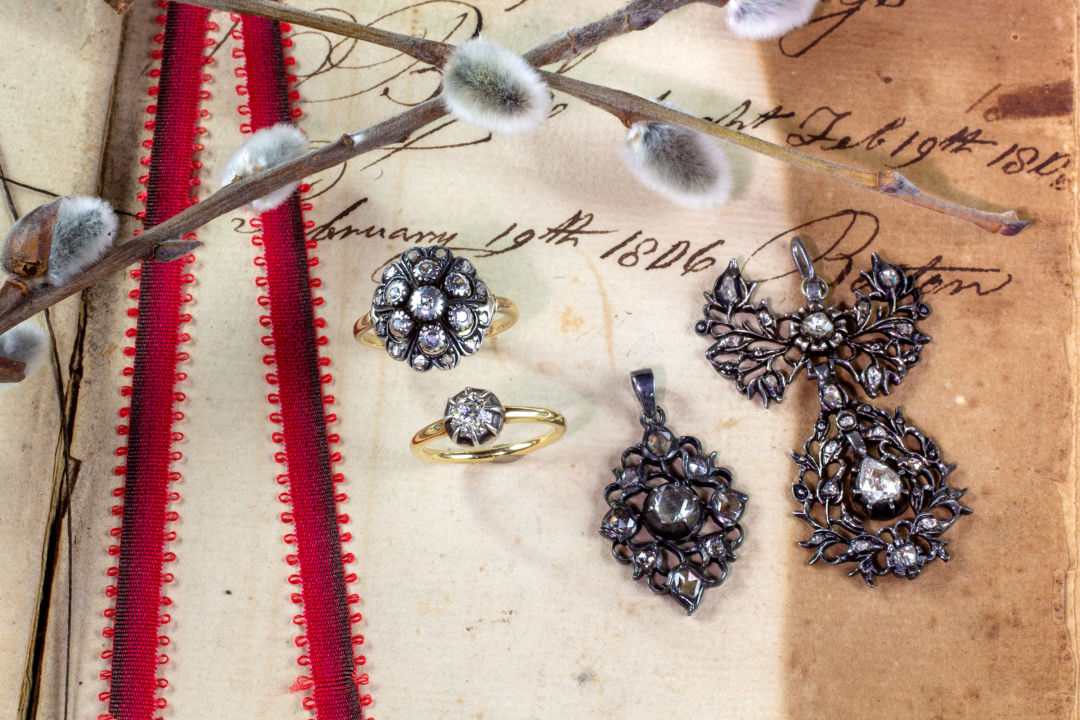
Late Georgian, Circa 1800 – 1830
Rustic, romantic, organic diamonds
A side effect of the Industrial Revolution was a rise in the standard of living. This era is where we first start to see smaller, more accessible jewelry being made for the public, instead of just for the nobility or religious ceremonies. Jewelry was still mostly made by hand, with chunky, hand cut stones, often set with a foil backing to enhance sparkle. Popular designs were romantic (hearts, bows, flowers), religious (varying styles of Christian crosses), or keepsakes for the living and the dead (black gems and enamel, gold, woven hair, painted miniature portraits). Jewelry from this period is special, rare, and delicate, requiring careful, occasional wear.
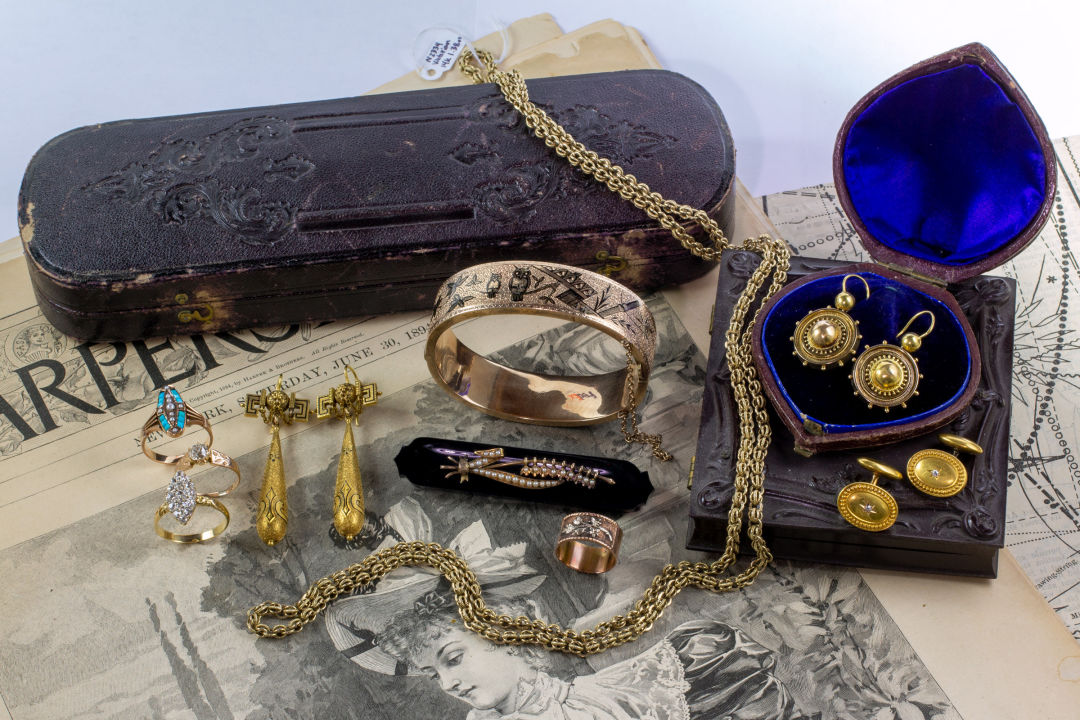
Victorian, Circa 1837 – 1901
Nostalgic, historic, sentimental
While Victorian jewelry has the reputation for being small and fussy, it was often quite bold and blocky, to hold its own against the voluminous garments of the times. This era is heavily influenced by Queen Victoria’s 63-year reign and can be loosely broken into early and late periods. The earlier period was influenced by her romantic courtship and marriage. Plenty of hearts, the “language” of flowers, turquoise (the color of forget me nots), and lockets were all the rage. After Prince Albert died in 1861, Victoria’s long period of mourning brought subdued black gems and enamel, as well as amethyst and rose cut diamonds to the fore. Fascination with science and nature popularized stars, moons, comets and animals, while the opening of Japan to the West brought a passion for “Oriental” interpretations.
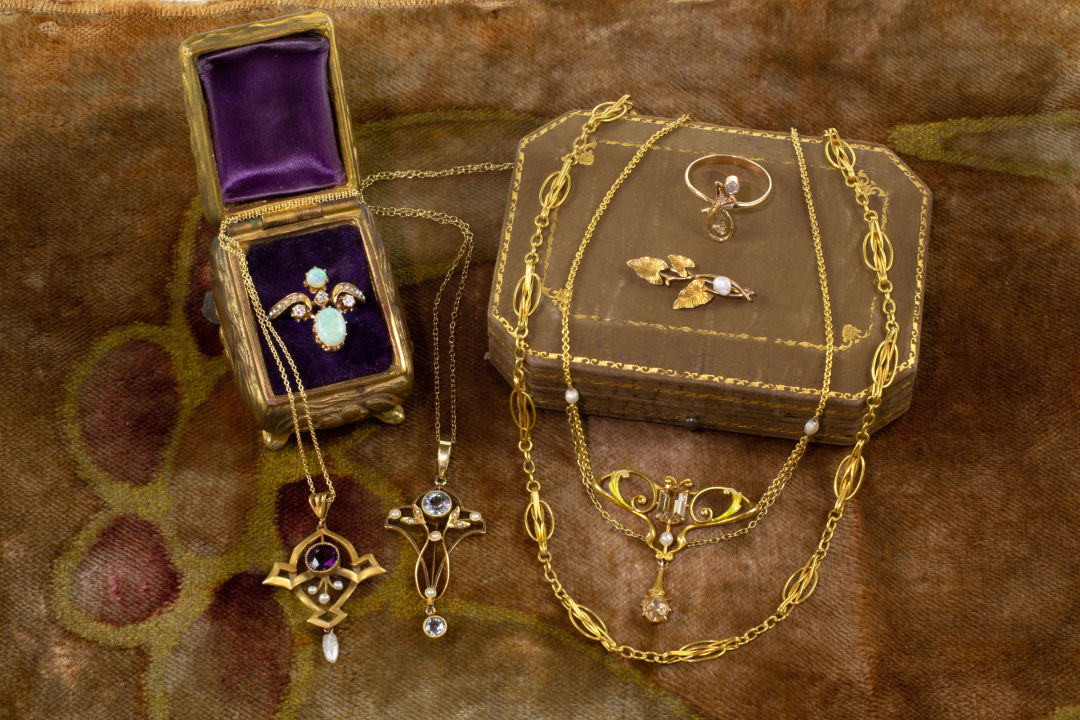
Art Nouveau, Circa 1890 – 1910
Feminine, flowing, natural
This unabashedly sexy style overlaps the Victorian and Edwardian eras. Starting as a fine art movement in France, this “new” art style was a backlash against the formality and industry of the Victorian mainstream. The Art Nouveau era took inspiration from the wildness of the natural world, with asymmetrical designs, curling vines, tendrils of smoke, female forms, and realistic flowers. The focus was on nature, not status, so organic materials like horn and pearls, as well as semi precious gems were often used, especially in the more experimental early days. Art Nouveau jewelry is most often gold, with gems and enamel in subtle colors. Undeniably sensual, it’s a pleasure to wear.

Edwardian (La Belle Époque), Circa 1901 – 1914
Restrained opulence, lacy, ethereal
When someone says “antique jewelry”, chances are something Edwardian pops into your mind. Sparkling, ethereal, and delicate, Edwardian jewelry was a backlash against the heavy, traditional styles dictated by Queen Victoria’s mourning period. The era was a celebration of luxury and elegance, championed by King Edward’s Consort Alexandra, who loved to layer platinum, diamond, and pearl jewels against her white feather trimmed gowns (as one does). The development of new jeweler’s torches allowed for gauzy platinum filigree wirework and tinier diamonds set closer together. Dinner rings, “dog collar” necklaces, and layered diamond bracelets were the hot looks, and domed “bombé” rings were the most popular choice for engagement rings.
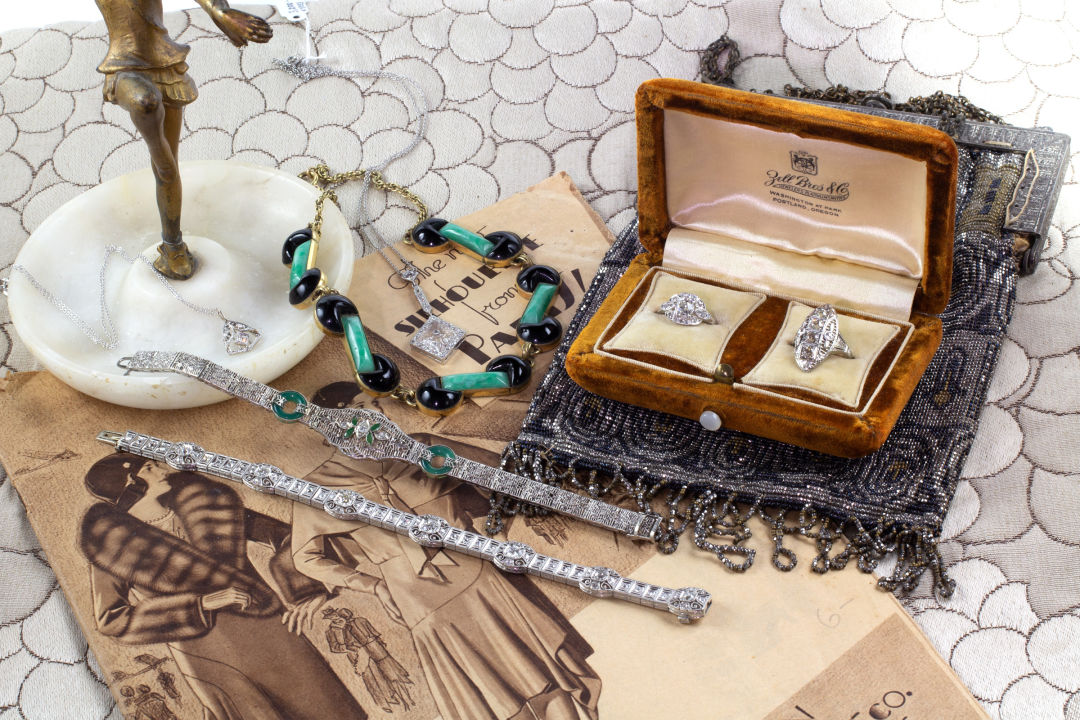
Art Deco (Arts Décoratifs), Circa 1918 – 1935
Bold, stylized, sleek
Art Deco was a hugely influential design era that started in France and became a worldwide phenomenon in 1925. This forward-looking design philosophy celebrated streamlined designs and the new technologies that could produce them. Synthetic stones were proudly advertised as “scientific” sapphires, and the introduction of white gold in 1918 offered a popular, new, more affordable option for white metal, which was at the time the top choice for most jewelry. The Art Deco period starts with lacy detail, but evolved to more angular and geometric shapes by the 1930’s. A relaxing of formality, shorter hemlines, and jazz music mark this era as the start of “modern” times in many people’s minds.
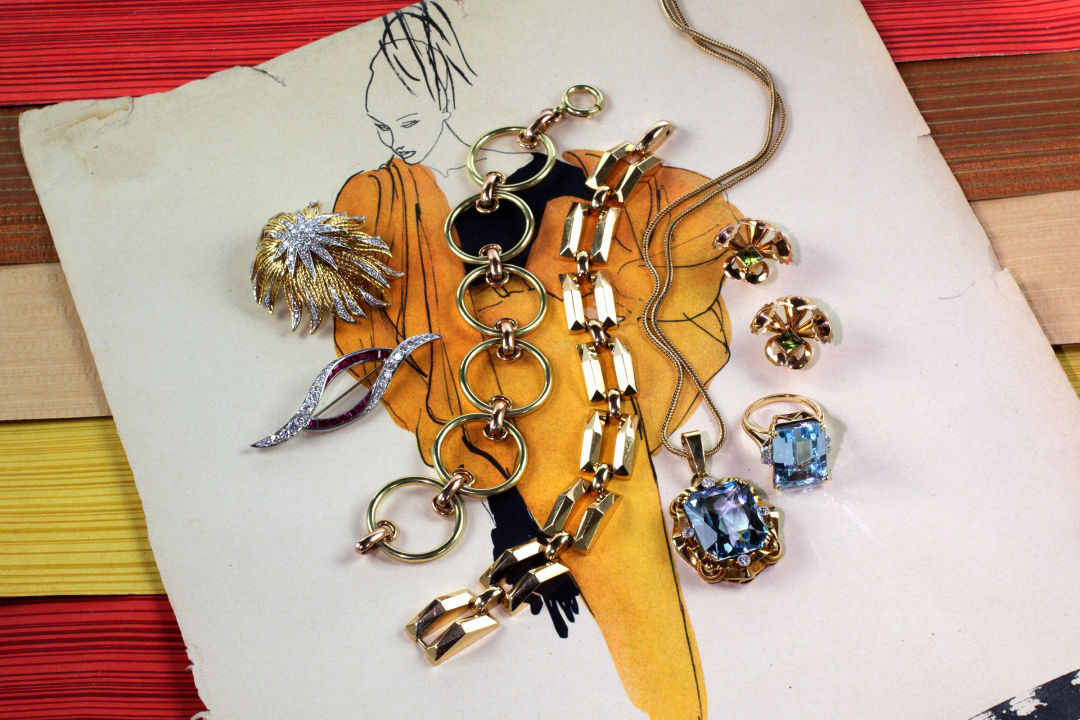
Retro Modern, Circa 1940 – 1950
Sleek, powerful, dramatic
As women began joining the workforce and gaining some financial independence, truly bold jewelry–often balanced by jackets with shoulder pads–were a reflection of their new power. The era is marked by the renewed popularity of yellow and rose gold with an exuberance of metal and colored gems. Geometric designs become more asymmetrical and voluptuous, and everything is oversized. After World War II, there was a renewed romanticism and resurgence in popularity of lockets, charm bracelets and sweetheart jewelry. The Retro Modern era ushered in the trend of “wedding sets,” with matching engagement and wedding bands worn on the same finger for the first time; this, of course, freed up the right hand for an exuberant cocktail ring!
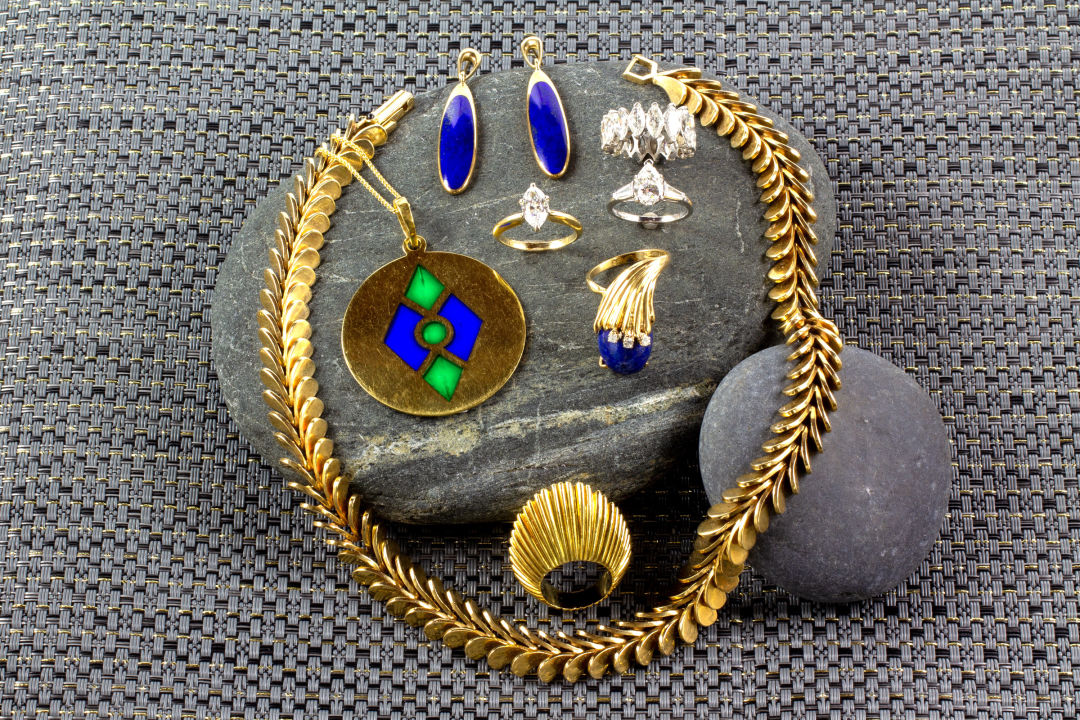
Mid-Century/Modernist, Circa 1945 – 1960
Sculptural, streamlined, daring
Inspired by the revolutionary ideas of Cubism and Futurism from the 1930’s, Mid-Century Modern jewelry was made to be wearable sculpture. Traditional forms became increasingly abstract and experimental, with an emphasis on bold color and form. Simple shapes and unexpected materials used by Avant Garde designers heralded the arrival of Pop Art. Yellow gold was still popular for high end jewelry, but many artistic jewelers worked in silver as well. As for engagement rings, Solitaire styles in round brilliant cuts or fancy shapes, often with baguette diamond shoulders, were all the rage.
Not only can you share your newfound knowledge with friends and family at dinner parties and during the holidays, you can find all of the antique jewelry pieces used to illustrate this article, along with many many more, at Maloy’s Jewelry. Conveniently located in local Downtown Portland, Maloy’s has been an antique and heirloom jewelry treasure for over 30 years. We’d love to see you in person, or you can also shop online at Maloys.com.
